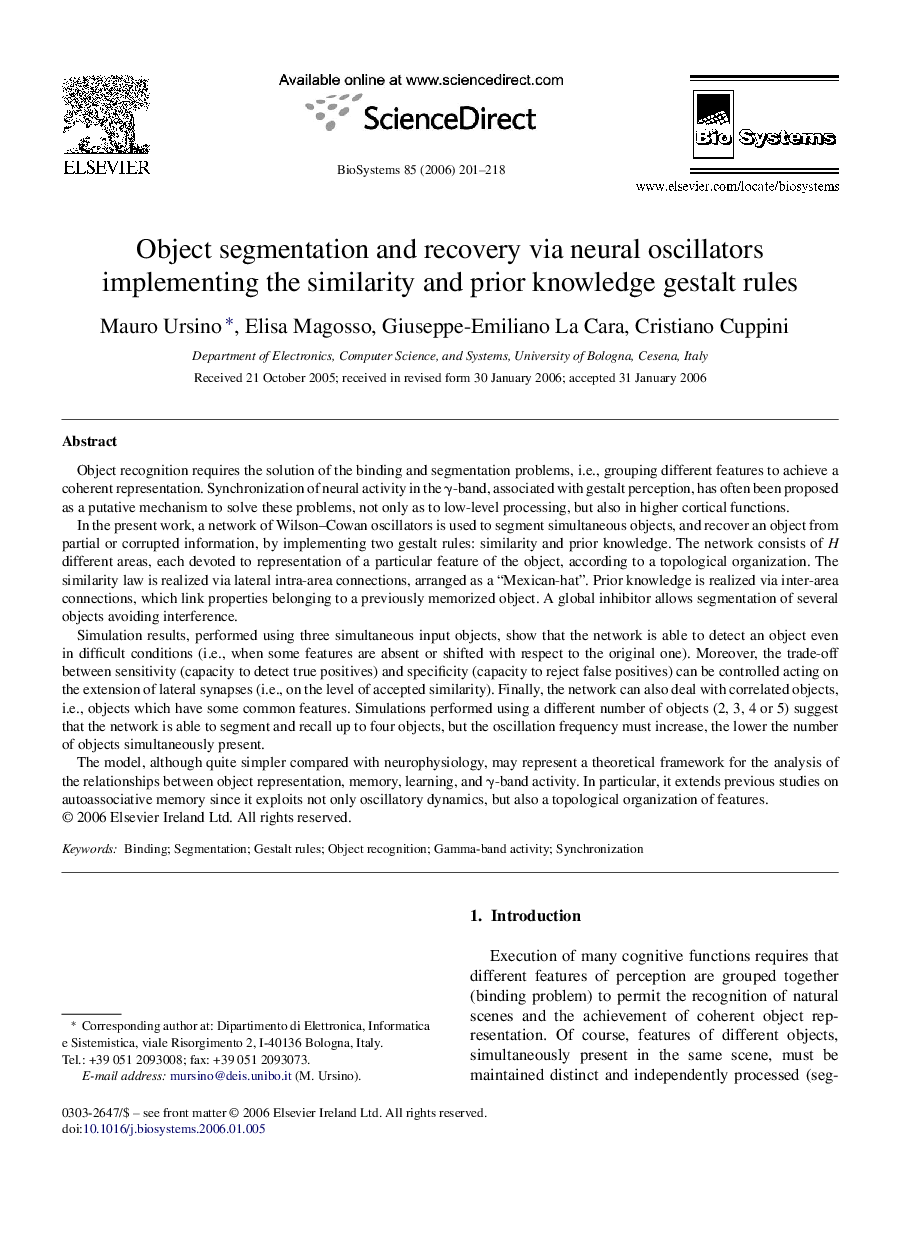| Article ID | Journal | Published Year | Pages | File Type |
|---|---|---|---|---|
| 2076954 | Biosystems | 2006 | 18 Pages |
Object recognition requires the solution of the binding and segmentation problems, i.e., grouping different features to achieve a coherent representation. Synchronization of neural activity in the γ-band, associated with gestalt perception, has often been proposed as a putative mechanism to solve these problems, not only as to low-level processing, but also in higher cortical functions.In the present work, a network of Wilson–Cowan oscillators is used to segment simultaneous objects, and recover an object from partial or corrupted information, by implementing two gestalt rules: similarity and prior knowledge. The network consists of H different areas, each devoted to representation of a particular feature of the object, according to a topological organization. The similarity law is realized via lateral intra-area connections, arranged as a “Mexican-hat”. Prior knowledge is realized via inter-area connections, which link properties belonging to a previously memorized object. A global inhibitor allows segmentation of several objects avoiding interference.Simulation results, performed using three simultaneous input objects, show that the network is able to detect an object even in difficult conditions (i.e., when some features are absent or shifted with respect to the original one). Moreover, the trade-off between sensitivity (capacity to detect true positives) and specificity (capacity to reject false positives) can be controlled acting on the extension of lateral synapses (i.e., on the level of accepted similarity). Finally, the network can also deal with correlated objects, i.e., objects which have some common features. Simulations performed using a different number of objects (2, 3, 4 or 5) suggest that the network is able to segment and recall up to four objects, but the oscillation frequency must increase, the lower the number of objects simultaneously present.The model, although quite simpler compared with neurophysiology, may represent a theoretical framework for the analysis of the relationships between object representation, memory, learning, and γ-band activity. In particular, it extends previous studies on autoassociative memory since it exploits not only oscillatory dynamics, but also a topological organization of features.
